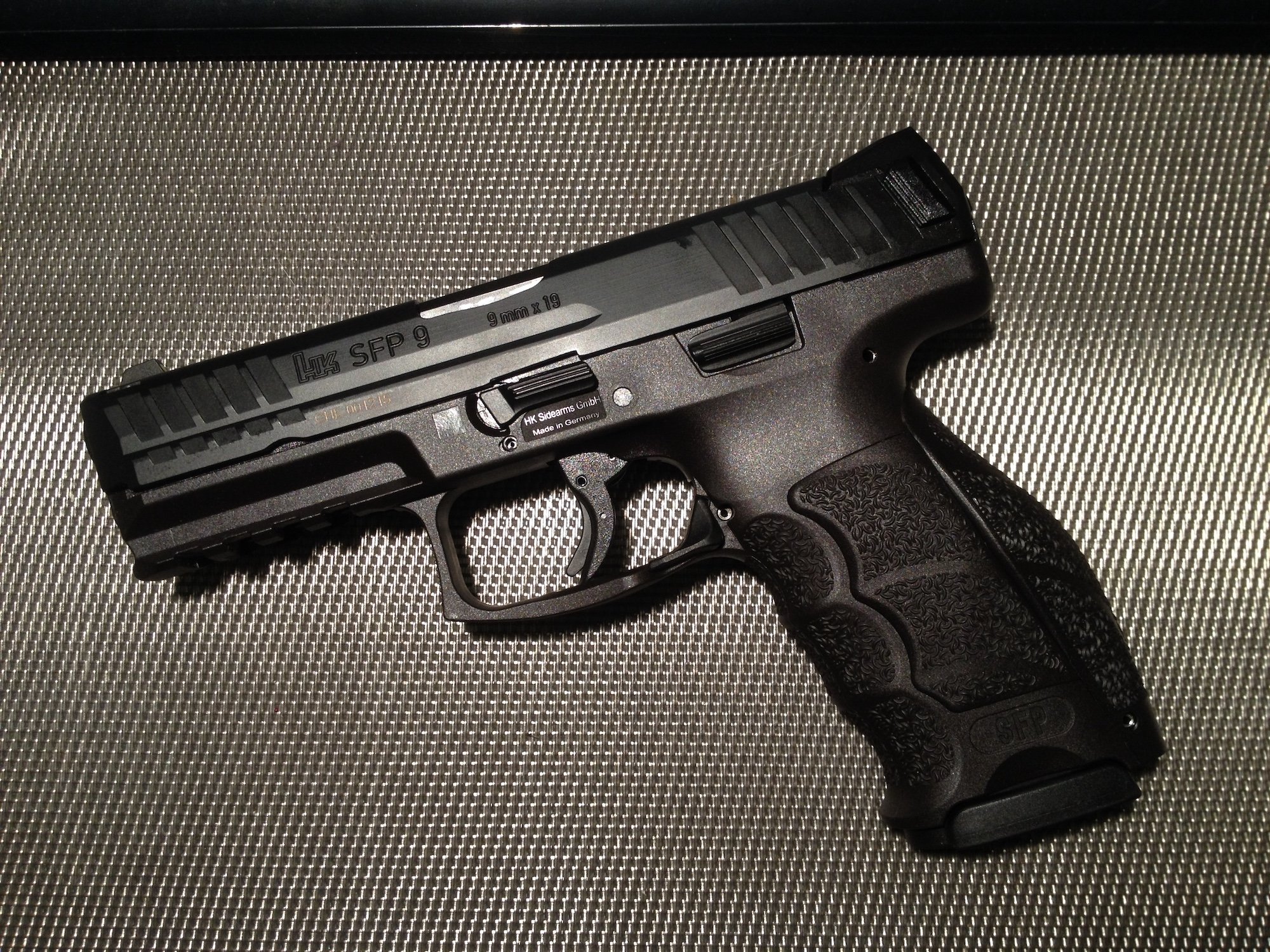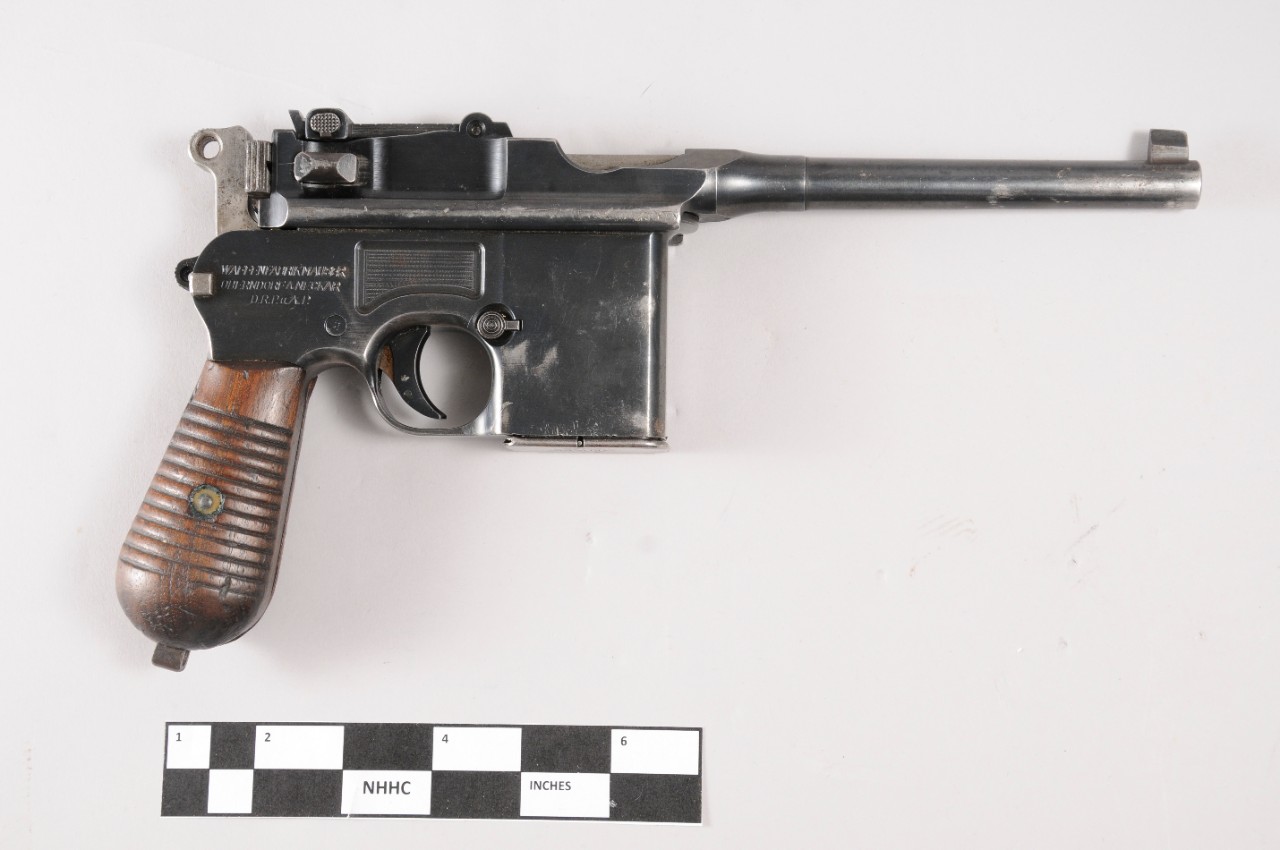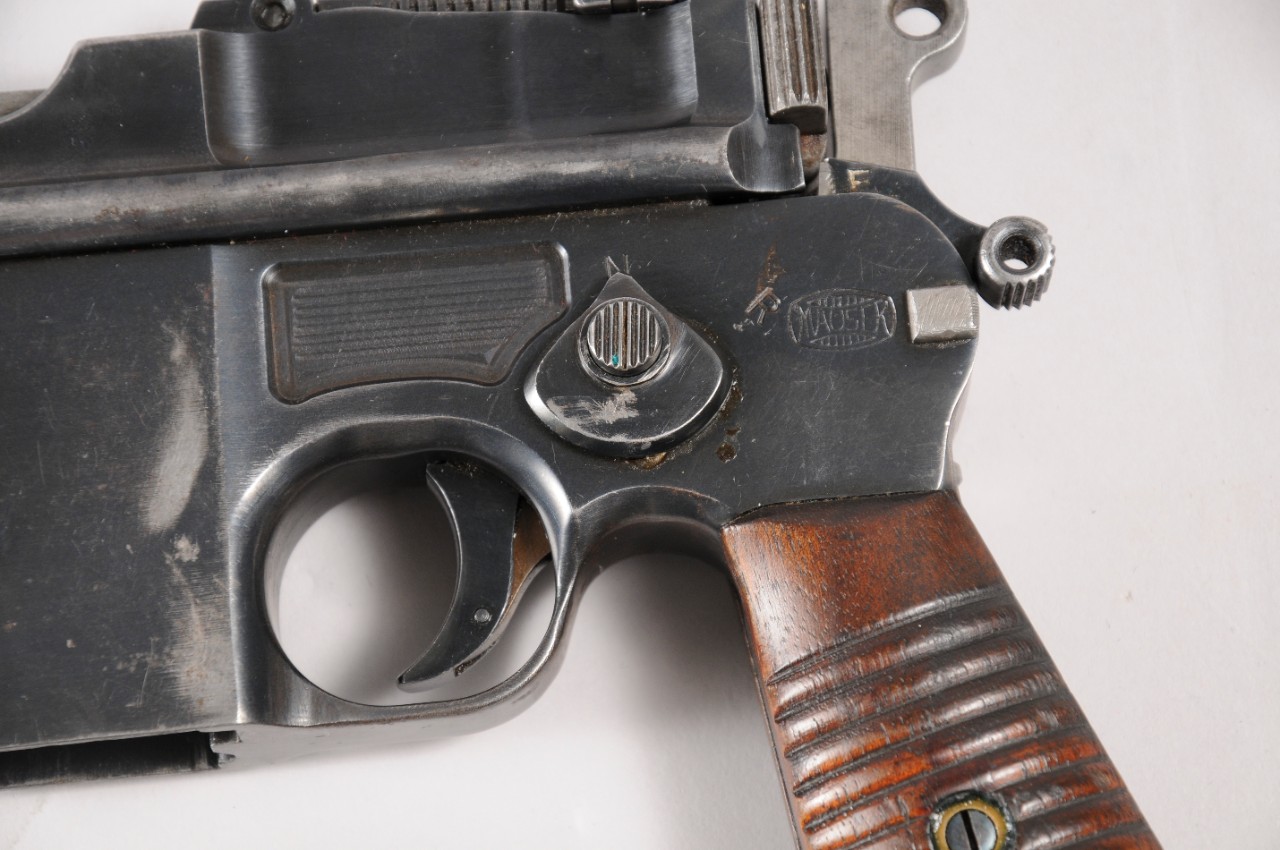German Hand Guns - Is a switch-locked recoil-operated semi-automatic pistol. The Luger was produced in many styles and in many countries between 1898 and 1949.
The design was first patted by Georg Luger. It was intended to be an improvement on the Borchardt C-93 pistol and was originally produced as the Parabellum automatic pistol, Borchardt-Luger system by the German weapons manufacturer Deutsche Waff und Munitionsfabrik (DWM).
German Hand Guns

The Luger was officially adopted by the Swiss Army in 1900, the Imperial German Navy in 1906, and the German Army in 1908. The Luger is the standard service pistol for Switzerland, Portugal, the Netherlands, Brazil, Bolivia and Bulgaria. It is widely used in other countries as a military service pistol and by police forces.
Most Iconic Pistols Of All Time
In the service of the German army it was adopted in a slightly modified form as the Pistole Modell 1908 (Pistole 08) in the caliber 9 × 19 mm Parabellum.
The Luger is well known for its extensive use in Germany during World War I and World War II, as well as the interwar Weimar Republic and post-war East German Volkspolizei.
The name Parabellum, which appears in DWM's telegraphic address, is derived from the Latin phrase Si vis pacem, para bellum "If you want peace, prepare for war."
The Swiss Army began looking for a semi-automatic pistol to replace the Ordonnanzrevolver in 1872.
New Zealanders Hand Over 10,000 Guns And Weapons Parts In Buy Back Plan
Georg Luger, working for the German company Deutsche Waff- und Munitionsfabrik, provided the Borchardt-Luger design, which in Swiss military trials was found to be more accurate and reliable than competing models such as the Mannlicher M1901 and Mauser C96.
20 Borchardt-Luger models were delivered to Switzerland in 1899 and, after further improvements to reduce weight, were adopted the following year as the Ordonnazpistole 1900.
In 1898, Germany accepted 145 C96 guns, but found that they jammed too often to be effective.

In 1901, Luger testing began, along with improvements to the C96, which was found to be lighter and more reliable.
How Germany Approaches Guns
After changing caliber from 7.65×21mm Parabellum to 9×19mm Parabellum, the Luger was adopted by the Imperial German Navy as the Selbstlade-Pistole Modell 1904 and later simply the Pistole 1904.
The Army delayed their adoption because Mauser required time to develop his own pistol, which was completed in 1907.
However, the new pistol was still found less desirable than the Luger, and on August 22, 1908, Kaiser Wilhelm II signed an order for 50,000 Lugers for the German Army, with orders to produce a total of 170,000.
In 1901, DWM delivered two Lugers to the US, who are also interested in the semi-automatic pistol.
Ww2 German Mauser Hsc
After successful testing, a total of 1,000 pistols and 200,000 rounds of ammunition were purchased for institutional use by the military at West Point and many other forts. The Luger was unpopular as most soldiers preferred their .38 Long Colt, leading to the Luger being withdrawn in 1905.
In 1906, the US evaluated semi-automatic pistols of domestic and foreign manufacture, including the Colt M1900, Steyr Mannlicher M1894, and Mauser experiments.
This was in response to combat reports that the .38 cartridges used in 1899-1902. In the 2010 invasion of the Philippines, there is a lack of stopping power. Because of the findings of the Thompson-LaGarde test, the military wanted .45 (11.25 mm) caliber handguns.

In 1906 and 1907, the US Army tested a large semi-automatic pistol. At least two and possibly three Parabellum Model 1902/1906 pistols were brought to the United States for testing in 1907 by Georg Luger, each chambered in .45 ACP.
German Sport Guns 1911 .22 Lr Pistol
Before arriving in the United States, Frankford Arsal provided 5,000 rounds of .45 Luger ammunition for testing and as a guide for chamber measurements.
Finding many flaws in this prototype bullet (the US authorities were later forced to produce a new bullet for the 1907 experiment), Luger DWM pulled the bullets from these bullets and reloaded them with a special faster powder in a new brass case.
Luger put 746 rounds of this new ammunition into court in March 1907 with his .45 Luger pistol.
2 .45 sled pistols with serial numbers 1 and 2 are known to have been used in the 1907 test.
Luger Dwm 1900 American Eagle, 30 Caliber
Although the .45 Luger passed the firing test, it ranked below the Colt/Browning and Savage pistols in ignition and discharge, although Army officials acknowledged that the .45 Luger performed satisfactorily with ammunition loaded with the DWM:
"The Luger automatic pistol, although it has obvious advantages in many respects, is not recommended for use in service tests, because the accuracy of its action, for example, with the Luger bullet, is not considered satisfactory, because the last seat of the cartridge is not positive. Spring action and because The powder mentioned by Mr. Luger is necessary, it is not available for satisfactory use in this country."
DWM and Luger later declined an invitation from Army officials to produce 200 pistols in .45 caliber for further competition against Colt and Savage's submissions, at which point DWM effectively withdrew from US trials.
The fate of the .45 Luger, serial number 1, is unknown as it was not returned and is believed to have been destroyed during testing. .45 Luger prototype serial number 2, believed to be a backup copy of serial number 1, passed the 1907 trial and is in private possession. Its rarity made it worth around $1 million when the Tales of the Gun episode "Million Dollar Guns" was filmed.
Mauser Pistol Images, Stock Photos & Vectors
At least two .45 caliber Luger cartridges were later produced for possible commercial or military sale; One is on display at the R.W. Norton Art Gallery in Shreveport, Louisiana. The other was sold in 2010 and is still in a private collection. One .45 Luger carbine is known to exist.
The first known example of Luger combat use was during the Maji Maji Rebellion of 1905-1906.
It was poorly received there as it was thought to be too heavy to be used quickly, especially as the grip safety had to be tightened, reducing accuracy, resulting in the safety being disabled on the P08 model.
At the beginning of the First World War, not all units of the German army were equipped with the Luger, which led to an acceleration of production.
German Luger 9mm Mouser Pistol W/holster S/n 3564 #41,01
Along with the P08, Germany also developed the LP08, a version with a longer stock and a barrel that could accept a drum magazine.
The LP08 was used by the Luftstreitkräfte early in the war before the aircraft were equipped with machine guns, although due to lack of pre-war production, the LP08 saw less use than the P08.
The primary user of the LP08 was the Army, which used its drum magazine to provide a high rate of fire at close range, an idea that would lead to the development of the Stormtroopers and the MP 18.

After the war, Germany signed the Treaty of Versailles, which limited the size of their army - the treaty stipulated that the German army could only have 50,000 rifles, and banned machine guns and pistols from all stocks.
The German Sport Guns Firefly Pistol
As Luger production increased, Germany began looking for a replacement in early 1927, but in 1938 chose the Walther P38, which offered similar performance to the Luger but took nearly half the time to produce.
Shifting the production line to the P38 at the start of World War II took longer than expected, leaving the P08 in production until September 1942, but the earliest copies remained in service until the end of the war.
In East Germany, the P08 was used by the Volkspolizei, mostly from ex-Nazi stocks, but they were produced in small numbers until 1953.
The Luger has a locking action that uses the hands together to lock, as opposed to the slide action of many other semi-automatic pistols such as the M1911. After the shot is fired, the barrel and bolt assembly move about 13 mm (0.5 in) to the rear due to recoil, and both are locked at this point. The switch hits a lug built into the frame, which causes the knee joint to lock and unlock the switch and brake. The barrel hit the frame and stopped rearward movement, but the bolt block continued to move, bound the knee, blocked the spt tube from the chamber and ejected. The slide and breech block move further under the spring loop and the next round is loaded from the magazine in the assembly. Tire sequence occurs in seconds and contributes to the highest average mud resistance
Any Modern Pistols Similar To Colt 1903 (other Than The New Ones)? All Metal, Thin, Minimal Controls...
This mechanism works well for high pressure cartridges, but cartridges loaded at low pressure can cause the gun to malfunction because they do not provide the rough recoil to fully function. As a result, the brake pad does not clear the top of the magazine or jams the base of the cartridge.
This malfunction with underpowered cartridges also occurs with the Browning and other pistol designs, but the Luger is sensitive to other cartridges.
Lego ww2 german guns, ww2 german toy guns, german guns from ww2, german spray guns, german guns, german sub machine guns, german made guns, wwii german submachine guns, german railroad guns, german sport guns, german toy guns, german anti tank guns

0 Comments